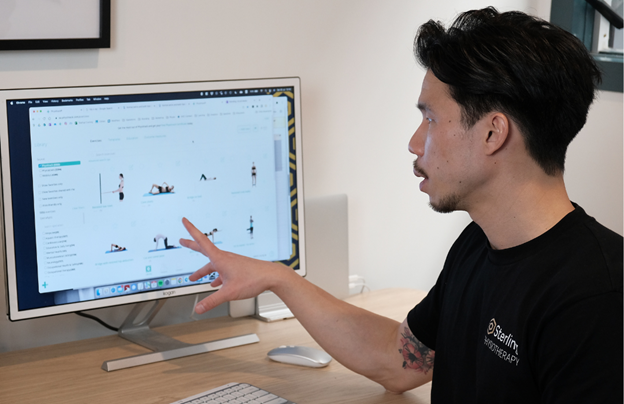Remote Therapeutic Monitoring (RTM) by Physitrack

Remote therapeutic monitoring (RTM) has recently become a widely discussed topic in the American health care system. These newly adopted CPT codes now allow practitioners to bill for services many were already providing as part of a typical plan of care. Let’s explore the background of what RTM is and if it is something you should be considering in your practice Let’s get started.
What is Remote Therapeutic Monitoring (RTM)
Remote therapeutic monitoring (RTM) refers to the use of medical devices or software to remotely manage and monitor non-physiologic data relating to the musculoskeletal and respiratory systems. Throughout the patient plan of care, the use of new CPT codes (98975, 98977, 98976, 98980, 98981) allows for billing and reimbursement by Medicare and other commercial insurances. Clinicians will use these codes when engaging with their patients regarding their prescribed rehab program either between in-office visits or on a completely digital basis if appropriate. The data shows that adding these types of engagements with patients actually improves outcomes and satisfaction while also decreasing the clinic’s spending. Once implemented, clinicians also benefit from streamlined and reduced workload as digital tools allow for automation measures.
Why Does Your Clinic Need RTM?
The main considerations for RTM billing relevant for the rehab disciplines are home exercise prescriptions and telehealth. With RTM, if you have at least one 20 minute digital interaction with a patient (such as a telehealth call) and have checked in with your patient at least 16 times regarding their progress and adherence with their home program, you can expect an average reimbursement of $160 per patient per 30 day period. Beyond that, this addition to patient care leads to improved satisfaction giving your clinic an edge over your competition. Digital tools can help ensure your patients remain happy customers of your practice, and happy customers drive additional referrals.
RTM also has health equity factors in mind, allowing for improved patient access. Now patients who otherwise would not have the ability to attend in person visits due to work restraints, childcare limitations, sickness, or accessibility reasons, can be patients of your clinic. This could open your business to a new market of patients that may not have been in your target audience prior to the implementation of digital health tools.
How Do You Get Started?
To be able to bill for remote therapeutic monitoring, you need an effective digital health care tool that will allow you to engage with your patients and download that data to add to your medical records. Physitrack is a consulting partner of DrChrono which provides this type of technology. A basic Physitrack subscription includes all the things you need for RTM: secure telehealth and messaging, along with a home exercise program (HEP) solution that includes patient engagement in the form of adherence and pain level tracking. There is also the ability to digitally assign patient reported outcome measures, which is effective as an RTM data point and decreases overall administrative paperwork for most clinics. All this digital data is able to be downloaded to add to your patient files. DrChrono users also have the ability to integrate with Physitrack, meaning you can access Physitrack service directly from your patient chart without needing to sign into a separate platform.
It is key when choosing a vendor for RTM that you pick a service that both clinicians and patients find easy and enjoyable to use. Without engagement on both the practitioner and patient side, you will not be able to collect the data needed to have this be a viable adjunct to treatment or additional revenue stream.
If you would like to learn more about remote therapeutic monitoring, check out the RTM: Explained page or visit DrChrono Marketplace for more information on how to get started with Physitrack!